What is the difference between spring and winter garlic?
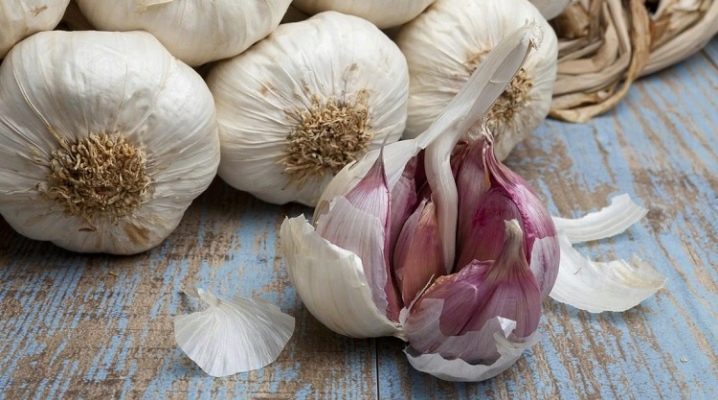
Garlic is a fairly healthy crop, so almost all summer residents grow it. You can plant both summer and winter varieties. In this article, we will consider how one subspecies differs from another.
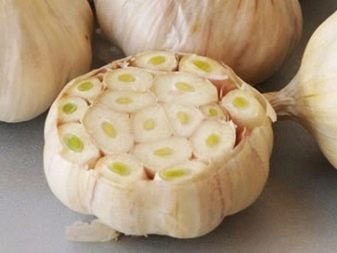
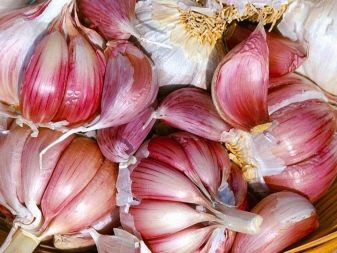
Appearance and taste
You can even distinguish winter garlic from summer garlic by its appearance: spring has a light color, and winter has a purple-reddish tint.... You can also determine the variety by size: spring garlic has small heads with small teeth, while its winter counterpart has larger cloves, and the head itself looks large... Small bulbs of the spring variety can produce 12-30 cloves, which are arranged in a spiral. The head of such garlic lacks a dense stem core. The pulp is quite firm, which allows the product to be stored for a long time, while maintaining all the useful properties in it. Spring garlic is propagated by planting chives in the ground.
Winter garlic variety gives large cloves (on average 6-8 pieces), the same shape and size... They are located around a dense rod, which is absent in the spring colleague. It grows from both cloves and puffed seeds that form on a mature plant. Winter garlic is pungent and pungent in taste and has a distinctive waxy bloom. Spring is not so hot due to the fact that it does not release essential oils so intensely. It has a mild and piquant semi-sharp taste. These two types differ in other aspects. Below we will consider them separately.
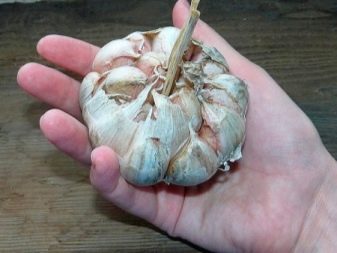
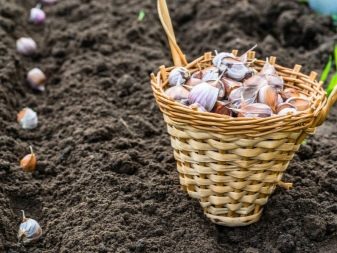
Landing time differences
The main difference between winter and spring garlic is planting time. The first, judging by the name, tolerates cold well, therefore, winter varieties are planted in the autumn without any fear that it will freeze. Winter garlic can be placed in the ground up to 20 days before the onset of frost, and it will overwinter just fine. But for a spring colleague it will be disastrous.
Such garlic is planted only in warm soil (at least + 5-6 degrees). Depending on the region, this is the end of March, April or even May.
Differences in care
A spring species needs more moisture, but an excess can lead to rotting of the heads. Such garlic grows well in loamy soil enriched with organic elements. It is recommended to plant seed in moist soil. In rainy weather, the spring variety will grow and ripen better than in the heat. The heat will stop the growth processes of spring garlic. But for winter crops, dry weather and dry land are important. It is preferable for him to choose sandy loam soils.
14-15 days after planting a plantation of winter garlic, it is recommended to enrich it with humus or peat composition. If severe frosts are expected, which are not characteristic of the region of plant growth, it is better to cover the garlic beds with improvised material for the winter.
Spring does not need additional shelter, since it is planted in a consistently warm season.
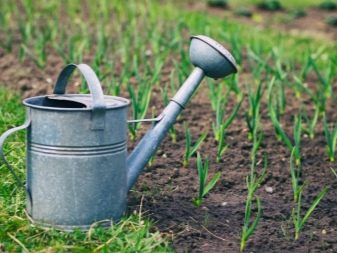
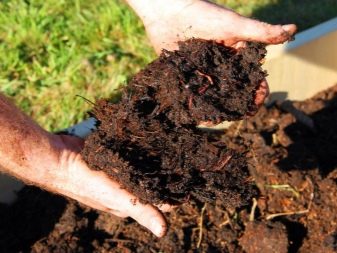
Comparison of other characteristics
Winter garlic is dug 15-20 days earlier than spring garlic. The latter is harvested not earlier than the end of August, when the feathers begin to turn yellow at the bottom. It is dried in a suspended position, then cleaned and distributed in storage containers. Most often stored in glass containers. Winter garlic is inferior in terms of storage: it can be kept for no more than six months. Yarovaya in this regard has more successful indicators - from 10 months to two years.Moreover, it is not particularly picky about the temperature, it will be well stored in the room.
The latter indicator is very important for those summer residents who grow crops, but do not have a basement. Winter varieties are stored exclusively in cool places, and if the bulbs do not dry out prematurely and the garlic does not lose its properties, then it will be possible to feast on the winter variety only for 6 months. Dried heads of spring garlic are stored either in a cool room, where the temperature does not drop below +1, or in a warm place with an average temperature of + 16-18 degrees. So they will be preserved until the next harvest. The winter variety is placed where the thermometer does not rise above + 3-4 degrees.
It is possible to determine which garlic grows in the country, even at the growth stage: the winter one produces a few feathers, they are wide and large, and the spring one gives a richer green mass, but the feathers are narrow. This explains the number of cloves: winter crops have fewer, while spring crops have much more. Each feather feeds one clove of garlic. Winter garlic varieties yield in the middle of summer, while spring garlic does not always have time to ripen if the summer is cool. The term for harvesting spring is the end of August or the beginning of September. Many gardeners from central Russia or in regions with more severe climatic conditions are afraid to plant such a species and prefer winter varieties.
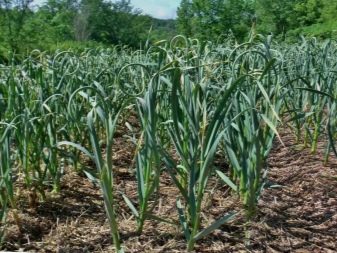
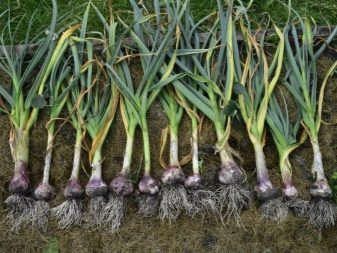
Which garlic is best?
No one can answer this question accurately, because each species has its own advantages and disadvantages. It all depends on the goal.
- For storage, it is better to choose spring garlic: in terms of keeping quality, its indicators are much better than that of winter garlic. Proper storage will provide you with garlic for 1.5-2 years.
- If you want garlic for harvesting and preservation, then winter is definitely suitable... By the time of the seasonal seasons, it will just ripen, it will be juicy and exuding a rich aroma.
- Plant winter varieties if you wish.: such garlic has a higher yield than spring garlic.
- If there is no opportunity and patience to brush small teeth, then again choose the winter option with large heads.... Spring gives not such large specimens.
- You also need to focus on your own taste. If the pungent varieties do not suit you, it is better to choose the spring subspecies.
Another nuance: if you have a shortage of space on the site, then plant winter garlic. This species will give more yield, and it will not mature for so long. On large plantations, spring varieties are usually grown. The winter species is not afraid of drought, frost: it is immune to any bad weather, but a spring one in an unfavorable environment can give a poor harvest. If garlic is grown for profit, it is more profitable to plant winter varieties. They have a high yield: one head weighs from 50 to 300 g, while the spring one does not shine with such results. Its heads are much smaller (from 30 to 100 g) and it produces fewer fruits.
No one will give an exact answer about the usefulness. Among summer residents, it is generally accepted that spring is more useful, but there is no scientific explanation for this. Agronomists and scientists do not distinguish any of the species, so when planting garlic, decide on the goal, and then choose the type.
The people believe that spring is more useful for the reason that winter shoots arrows, into which some of the nutrients go. By the way, they can also be used for culinary purposes, plus winter varieties give bulbs, from which you can grow a whole garlic head.
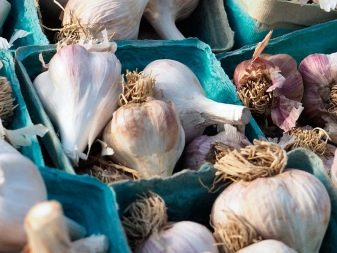
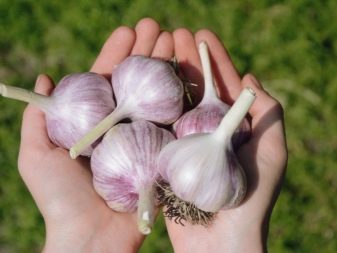













The comment was sent successfully.